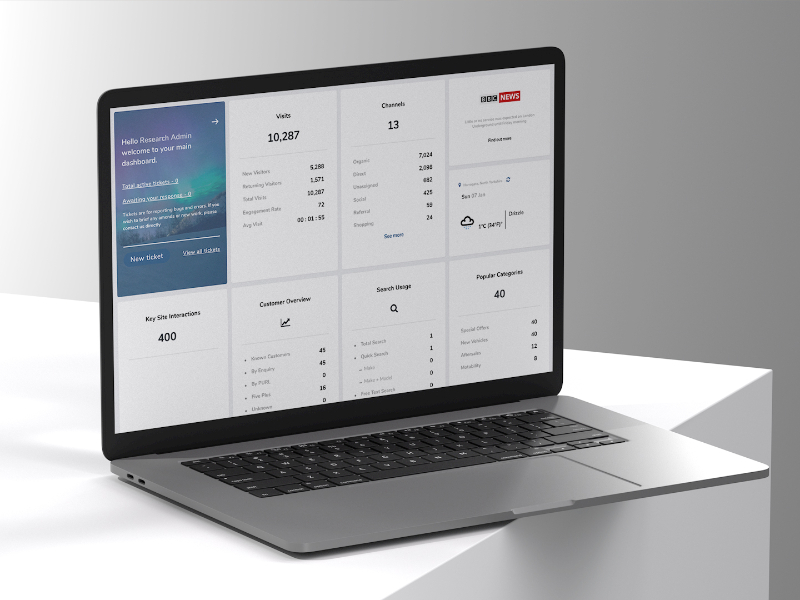
Website performance is a critical factor in achieving online business success. It not only affects user experience but also influences conversion rates, search engine rankings, and overall brand reputation. In this comprehensive guide, we'll explore the most effective methods to measure your website's performance, identify areas for improvement, and implement strategies to stay ahead of the competition.
Understanding Website Performance
Website performance refers to a range of metrics that indicate how well a site is functioning. This includes load times, user interactions, and overall satisfaction. By consistently measuring these factors, businesses can make informed decisions to enhance their online presence and user experience.
Key Metrics for Measuring Website Performance
1. Page Load Time
Page load time is one of the most important factors that influence user experience. Research shows that 53% of mobile users will abandon a site if it takes longer than 3 seconds to load. Tools like Google PageSpeed Insights and GTmetrix can help you analyse your site’s load times and identify areas for improvement.
2. Bounce Rate
The bounce rate measures the percentage of visitors who leave your site after viewing just one page. A high bounce rate may indicate that your content isn’t engaging or relevant to your audience. However some pages like a contact page where the visitor is probably just looking for a telephone number or an address to contact you are in fact designed to bounce. Use Google Analytics to monitor this metric and consider strategies like improving internal linking or enhancing content quality to keep users on your site longer. But don’t get all hung up about bounce rates as it isn’t necessarily a bad thing.
3. Conversion Rate
Conversion rate is the percentage of visitors who complete a desired action on your site, such as signing up for a newsletter or making a purchase. According to Optimizely, improving your website's conversion rate can have a significant impact on revenue. A/B testing various elements, such as headlines, call-to-action buttons, and layouts, can help you determine what works best with your audience.
4. User Engagement Metrics
Metrics like average session duration and pages per session provide insights into how users interact with your content. Higher engagement levels are often correlated with better site performance and higher conversion rates. Tools like Hotjar allow you to collect qualitative data about user behaviour through heatmaps and session recordings. Essentially we want people to be engaged on our website and the longer they stay on, generally the better. But again it isn’t the be all and end all…it can be a complex set of reasons as to why your engagement levels are high or low.
5. Mobile Responsiveness
With mobile traffic accounting for more than 50% of all web traffic, ensuring your website is mobile-friendly is essential. Use Google's Mobile-Friendly Test to check if your website meets mobile usability standards.
Tools for Measuring Website Performance
Google Analytics
This tool offers in-depth insights into user behaviour, traffic sources, and conversion tracking. Set up goals in Google Analytics to monitor specific actions users take on your website.
Google Search Console
Google Search Console helps you track your site’s performance in search results, identify crawl issues, and monitor backlinks. It’s essential for understanding how search engines view your website and where improvements can be made.
SEMrush
SEMrush is a comprehensive SEO tool that provides website audits, keyword tracking, and competitive analysis. Understanding where your website stands in relation to your competitors allows you to strengthen your SEO strategy.
Ahrefs
Like SEMrush, Ahrefs offers valuable insights into backlink profiles, keyword rankings, and content analysis. These insights can help boost your SEO efforts and improve your website's visibility.
Best Practices for Improving Website Performance
1. Optimise Images
Large image files can significantly slow down your website. Use tools like TinyPNG to compress images without sacrificing quality, which can drastically improve load times.
2. Leverage Browser Caching
Browser caching allows elements of your site to be stored on users’ local devices, reducing load times for returning visitors and improving overall user experience.
3. Minify CSS and JavaScript
By reducing the size of CSS and JavaScript files and removing unnecessary characters, you can enhance your site’s speed. Tools like UglifyJS can help you achieve this.
4. Implement a Content Delivery Network (CDN)
A CDN distributes your website’s content across multiple servers around the world, reducing latency and improving load times for users no matter their location.
5. Regularly Update Content
Fresh, relevant content not only keeps users engaged but also has a positive impact on SEO. Regularly update blog posts, product pages, and service descriptions to ensure they reflect the latest information.
Common Questions
How Often Should I Measure My Website Performance?
What is the Ideal Page Load Time?
How Can I Improve My Website’s SEO?
Conclusion
Measuring your website's performance is essential for ensuring its ongoing success. By regularly analysing key metrics, using the right tools, and implementing best practices, you can significantly improve user experience, boost conversions, and enhance your search engine rankings.
Interested in your own CaboodleCode AI website?
Get in touch today!
Please fill in your details below and let us know when you would like a demonstration of Online Car Events.
Got a question, a brief or a challenge you want to set, feel free to tell us.

